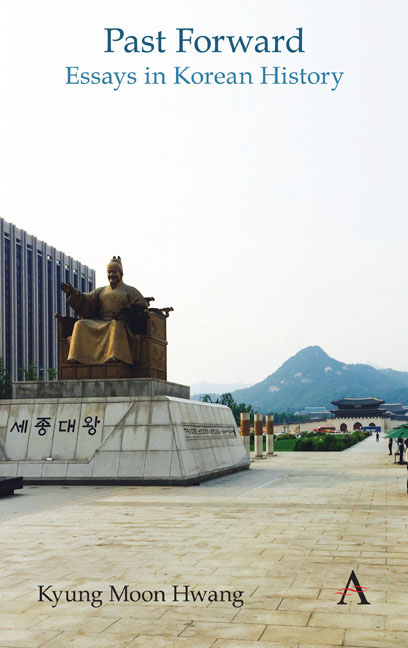Book contents
- Frontmatter
- Contents
- List of Figures
- Foreword
- Chronologies of Korean History
- Themes
- Acknowledgments
- Note on Romanization and Spelling
- Part I Circulating History
- Part II Durable Traditions
- 8 Marking the New Year
- 9 Slavery, Bondage, and Social Hierarchy
- 10 Marriage, Adultery, and Concubinage
- 11 Buddhism and Korean Identity
- 12 Christianity's Rapid Rise
- 13 Civil–Military Balance in Politics
- 14 Regionalism in Elections
- 15 Yeongnam's Strong Presidential Politics
- Part III Ancient Remains
- Part IV Dynastic Depths
- Part V Modern Origins
- Part VI Challenges of Nationhood
- Part VII History Makers
- Part VIII External Presences
- Part IX Trials of Modernization
- Part X Gripped by the Past
- Index
9 - Slavery, Bondage, and Social Hierarchy
from Part II - Durable Traditions
- Frontmatter
- Contents
- List of Figures
- Foreword
- Chronologies of Korean History
- Themes
- Acknowledgments
- Note on Romanization and Spelling
- Part I Circulating History
- Part II Durable Traditions
- 8 Marking the New Year
- 9 Slavery, Bondage, and Social Hierarchy
- 10 Marriage, Adultery, and Concubinage
- 11 Buddhism and Korean Identity
- 12 Christianity's Rapid Rise
- 13 Civil–Military Balance in Politics
- 14 Regionalism in Elections
- 15 Yeongnam's Strong Presidential Politics
- Part III Ancient Remains
- Part IV Dynastic Depths
- Part V Modern Origins
- Part VI Challenges of Nationhood
- Part VII History Makers
- Part VIII External Presences
- Part IX Trials of Modernization
- Part X Gripped by the Past
- Index
Summary
In the early 2010s, Americans commemorated the 150th anniversary of their Civil War (1861–1865), which was about many things but mostly became a conflict over the issue of slavery. As the war came to a close, an amendment abolishing slavery was added to the US Constitution, a document that, since the founding of the country, had recognized and even promoted slavery. In the decades preceding the war, however, slavery and the bitter disputes over its place in American society had eaten away at the nation's soul and raised basic questions about its identity and character.
The United States was not the only country with slavery, of course, and various forms of customary or legalized human bondage were common around the world. Koreans themselves long practiced their own brand of slavery, within a population with no physical differences, while that of the United States was based on, and had a lot to do with furthering, the notion of race. But the two slave systems also shared fundamental features, including hereditary slave status and the treatment of slaves as property to be bought, sold and bequeathed. And in both cases, the social segregation of slaves was maintained by the “one drop of blood” principle, which came in response to widespread “mixing” through sexual exploitation. The children of these master-slave unions almost never took the father's social status, and so their subjugated, stigmatized identity was passed down to their descendants.
Furthermore, most people did not question basic notions behind a social order that perpetuated slavery. In the United States before its Civil War, in both the North and the South, almost all White people, whether or not they thought slavery was just, believed in the inherent inferiority of Black people. In premodern Korea as well, the common perspective, especially by those, like slave owners, who benefited from the system, saw slavery as simply the extension of dividing society according to birth. And as with the United States, Korean society came to depend economically on this organized means of human exploitation.
In both societies, however, there also emerged scholars, clerics, officials and others who vehemently condemned slavery on moral and other grounds. And although, unlike in the United States, we have little trace of the voices of the Korean slaves (nobi) themselves, there is plentiful documentary evidence of the demeaning, dehumanizing and often brutal effects of slavery.
- Type
- Chapter
- Information
- Past ForwardEssays in Korean History, pp. 24 - 26Publisher: Anthem PressPrint publication year: 2019



